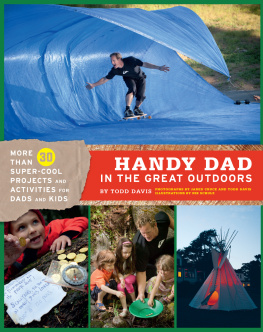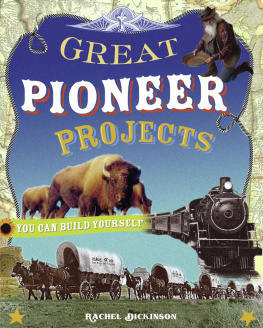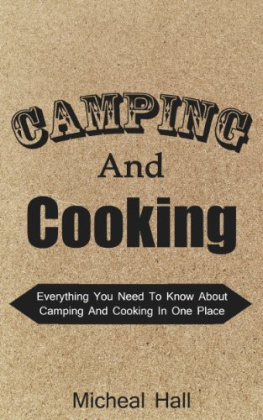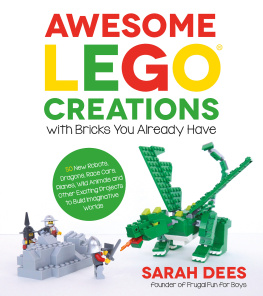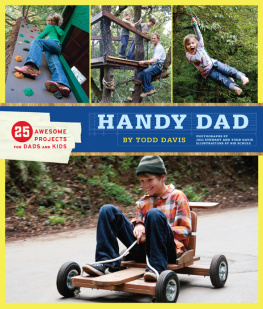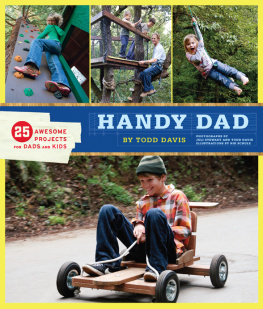
INTRODUCTION
My parents spoiled mebut not with stuff. They didnt cater to my every whim and whine. I didnt have all the latest and greatest toys. I made good use of a hand-me-down bicycle, soccer ball, and football. I wasnt rewarded with an exorbitant allowance for grudgingly completing simple chores.
Instead, my parents spoiled me with outdoor adventures and experiences. But until I was an adult, I took it for granted. When I was a kid, I just assumed everyones parents took them waterskiing, snow skiing, fishing, hunting, and camping or backpacking each weekend. We were on outdoor-adventure expeditions so often that I just thought it was normal.
These weekly sojourns were always fun, but not always easy. My parents would never reach the destination and simply throw the car doors open and let us kids just run amok. From a very young age, no matter the activity, self-reliance was the primary lesson. We were expected to be able to pack everything we would need for the whole trip. Forgetting a sleeping bag meant a cold night or two, to be sure, but you were unlikely to forget again. We were taught how to use the gear properly. Forgetting or feigning ignorance wouldnt get it set up for you, but my parents were always ready to show you again. We were also taught to respect our safety, gear, and environment. Failure to do so meant staying home the following weekend with a babysitter.
We were exposed to new things constantly, learned new things constantly, and shared things constantly. I truly believe these outdoor adventures made us the close-knit family we are.
Today I find myself with a family of my own. My beautiful wife has blessed me with two young sons. These little rascals have quickly evolved from crawling up the stairs to BASE jumping off the couch. I look forward to the day when my boys are old enough to go on adventures with me. I have a great deal to share with them that Ive picked up over the years. And Ive included it all here in this book, from basic survival skills to humorous pranks to pull on big or little brothers (never Dad, but Mom might be OK), along with outdoor activities and projects to do together. There are a range of projects from easy (Weekend Warrior) and moderate (Car Camper) to challenging (Backwoodsman).

I hope this book will inspire you to go outsidewhether that means the backcountry or your backyardand explore and experiment. Anyone can light a fire with a match in seconds, but take two sticks, two hours, and two young sons. Good times.
CHOOSE THE BEST CAMPSITE
DIFFICULTY LEVEL:
Weekend Warrior

Picking the right location to pitch your tent can make the difference between a great camping trip and a dud. How can you find a spot that will make for a memorable time instead of a miserable one? Read on.
MATERIALS:
- Your noggin
- Maps
- Online resources

INSTRUCTIONS:
Start your campsite-scouting from home. The National Park Service (nps.gov), the Bureau of Land Management (blm.gov), and your own state parks website are great places to start. If you live in or are heading to the West, look at www.sunset.com. Other regional or city magazines may also offer insights for local trips. Or pull out your favorite guidebook or map. National Geographic offers an Adventure edition road atlas that not only displays campgrounds prominently but also features overviews of all of the national parks. Benchmark Maps publishes detailed and informative state atlases that are also worth a look. For a more personal take on traveling, research blogs. And ask your friends where theyve gone lately.
Once you have a general area in mind, have a look at it on Google Maps or Google Earth. Look for features of interest such as high alpine lakes and streams and dramatic elevation changes. Consult the NPS or BLM, if applicable, to see which specific areas are open for camping. If reservations are required, reserve early. Popular spots can fill up weeks or even months in advance.
Once youve isolated the area youre interested in, buy a good-quality topographic map (USGS, for example). What are the notable features of your chosen area? What must you look out for?
When youre out in the field, with your map in hand, start looking for the following:
- A freshwater source
- A flat site that provides protection from the sun, wind, and rain.
- A downed tree or other source of firewood (Check local regulations regarding wood gathering before you go.)
- An interesting feature that will make your trip more memorable, e.g., a large lakeside boulder or fallen tree from which to dive or fish, a grassy meadow, or a great trail or view.
If youre car camping at a campground, pick a spot away from the heavily traveled parts of the camp. Its no fun to constantly have car headlights shining through your camp. Keep water sources in mind. Being relatively close to one means a shorter distance to lug water containers. Its a good idea to be close enough to the toilets so that you can see them at night, but not so close that you can smell them. Take note of which way the wind blows.
Once youve considered all your options, pick the site that feels right. Find a flat spot to pitch your tent. Think about where the sun will rise in the morning. If its cold out, pitch in a sunny spot. If its warm out, a tent may quickly get uncomfortably hot in direct sun.
Are you all settled in? Good. Now find two trees from which to hang your hammock and reap the benefits of your well-executed plan!
SET UP A TENT
DIFFICULTY LEVEL:
Weekend Warrior

There are stunning, soul-stirring views all over the world. Whats the best way to experience them? Well, you could stay in a fancy lodge. But for the same amount you might spend on a single night in a lodge, you can kit out your own vacation hideaway, a portable palace that you can take deep into the forest, to the edge of a burbling stream, or to the top of a mountain. Yes, sir, all you need is a good tent.
MATERIALS:
- 3-person tent
- Any tent you purchase will likely come with most of the following items:
- Tent bag
- Tent poles and bag
- Rain fly
- Tent stakes and bag
- Guy lines with tensioners (bring 4 extra guy lines if its going to be windy)
- Tent-pole repair tube
- Footprint for tent, if not included. (This is optional, but highly recommended for additional protection from punctures and abrasion. If you cant find a footprint for your tent, a tarp will work as well.)
- Therm-a-Rest or other camping pad
- 2-inch foam pad (if youre car camping and like things extra cushy)
- Bedding (sleeping bag if youre backpacking, or sheets and pillows if youre car camping in style)
TOOLS:
- Hammer, camp axe, or rock


